Red begonias: an overview of varieties and growing rules
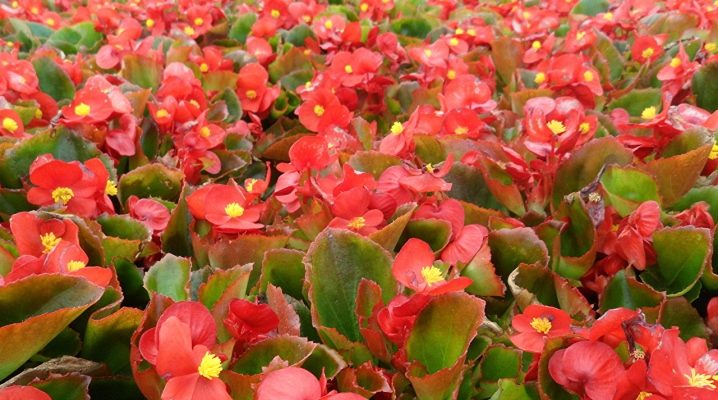
Begonia is a plant familiar to many, but few know what the variety of these flowers is, differing in shades and colors and leaves, as well as their size and shape. A large number of different types allows you to choose a plant to your taste - for home or garden. For those who prefer red begonias, it will be useful to study the overview of varieties and find out what the growing rules are.

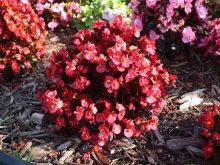
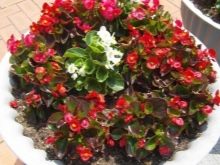
Description and variety of species
Bright and beautiful begonia flowers are eye-catching. They look great in the garden in a flowerbed and also bloom well all year round at home. But especially interesting are the red begonias, which have the same red shade of the leaves.
- One of the most common red-leaved begonias is considered "Red Bull"... Its rather large, slightly pointed leaves of a rich burgundy color are striking in their beauty. But it blooms extremely rarely, unlike other species of this plant.
- "Red kiss" also features bright red foliage, but more rounded. In addition, there is a pattern on the sheet plate. Delicate pink flowers are somewhat lost against the background of such a bright frame.
- Begonias "Double Red" and "Dark Red" have very beautiful red double flowers. Lush flowers can also decorate flower beds in the garden. With their help, you can create a mini-garden at home by placing several pots with plants next to it. The leaves are bronze in color and also have a pattern.
- "Benariensis Big Bronze Leaf" - a hybrid variant that contains the best qualities of other species of this plant. It grows quickly and well. Beautiful leaves, cast in bronze, are an ornament in themselves, and when the plant blooms, it becomes doubly beautiful. The bush is strewn with pink flowers, which can differ in shade - medium pink or more intense. The bushes feel good both in the flowerbed and at home.
- Red and white also looks very impressive. "Marmorata"... Everything in the plant is harmonious - both the leaves of an interesting shape and beautiful double flowers. A white flower with dense wavy petals is framed by a red border. In this case, the color white from the middle smoothly to the edge turns into pinkish. Such flowers will be a real boon for landscape design, and will delight your home with their flowering.
- Of two-tone begonias, yellow-red looks just as gorgeous "Pikoti"... A large yellow lush flower is framed with a red border.
- Begonia "Emperor" refers to the ever-flowering. Providing her with very simple care, you can admire the delicate flowers with which the entire bush is strewn all year round. Flowers can be pink or red. In summer, it can be grown in flower beds, and then dug up and transplanted into pots, or kept in a well-lit room all year round. The more sun, the more flowers there will be on the bush. The flowers are not large, but due to their large number, the bush looks gorgeous.
- Another view that will decorate the house - "Baladin"... Small but numerous red flowers will add a bright touch to any room in the house.
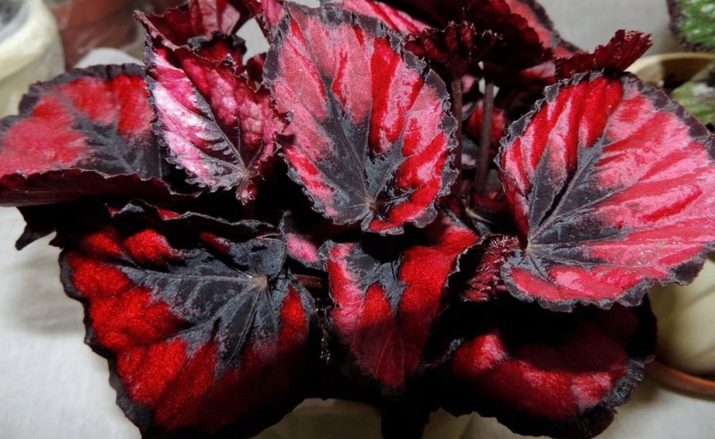
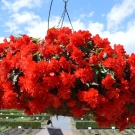
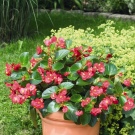

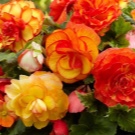
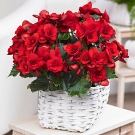
Planting and leaving
Many people like to grow begonia at home precisely because, generously presenting beautiful flowers even in winter, it is unpretentious in care. The main thing is to initially plant it correctly, pick up the right soil, after you brought the plant from the store.
In garden markets, you can buy any soil, including for indoor plants, and even separately for begonias.
But it will not be difficult to prepare the composition yourself. To do this, you just need to mix black soil with peat in a 1: 1 ratio.

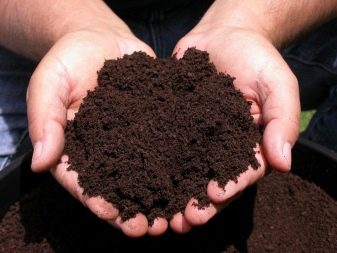
When choosing a plant in a store, you need to pay attention so that the plant looks healthy, the leaves are dry and intact.
At home, before planting, for the purpose of prophylaxis, the roots can be treated with a fungicide.
The pot should be chosen not deep, but of medium size, so that the plant does not spend energy on building up the root system, but more on foliage and flowers. Drainage holes must be made in the pot. Small stones are placed at the bottom, which will serve as drainage. Then a part of the soil is poured, the plant is placed, the roots are well straightened, and then the soil is poured.
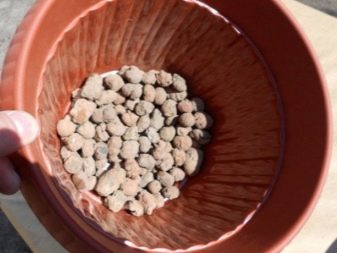

Begonia is watered regularly, but not excessively. You just need to focus on the temperature in the house and the time of year. In winter, it is enough to water the plant once or twice a week, and in hot summer it can be every other day. The main thing is that the soil does not dry out.

Begonia loves the sun and will bloom in a well-lit room, but it is advisable to avoid direct sunlight. In winter, the sun may not be enough. Therefore, several hours a day of additional artificial lighting will be useful.
Begonia loves moisture, but it is recommended not to spray the plant, but to spray moisture in the air around it. In the summer, this can be done several times a day.
The plant can not be transplanted, in any case, it is definitely not worth doing it often. If only the plant is too large, and it is already cramped in the pot. This must be done carefully so as not to damage the roots. You need to prepare the pot, drainage, soil, and then carefully remove the begonia from the old container along with a lump of earth and transfer it to a new one, then add fresh soil, then water well.
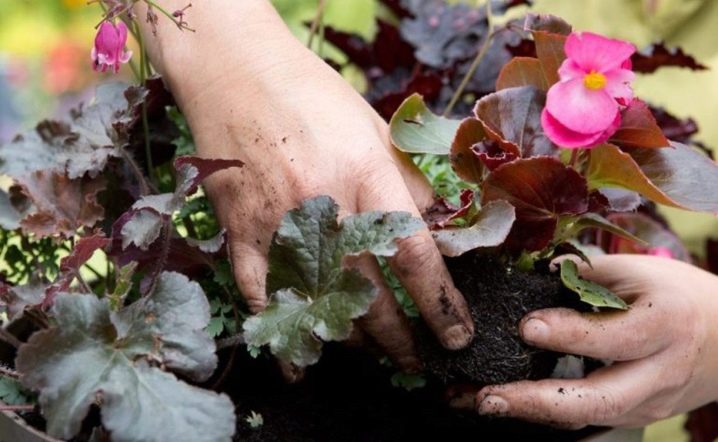
If you want the bush to grow more luxuriantly, you can stimulate its growth by slightly cutting off the tips of some shoots, and soon the plant will give new shoots, on which flowers will then appear.

Disease and pest control
With proper care - good soil, sufficient light and watering - the plant rarely suffers from various diseases. However, there may be other infected plants nearby.
Powdery mildew and gray rot can be dangerous for begonias, as for many other flowers. In the first case, a white bloom appears on the leaves, in the second - gray.

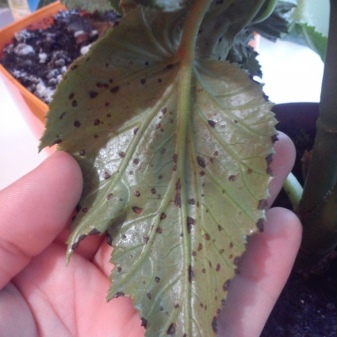
But in both cases, if nothing is done, the flower may die. To combat these misfortunes, the drug "Trichodermin" is suitable. It is sold in garden stores; you need to process the plant according to the instructions on the package.
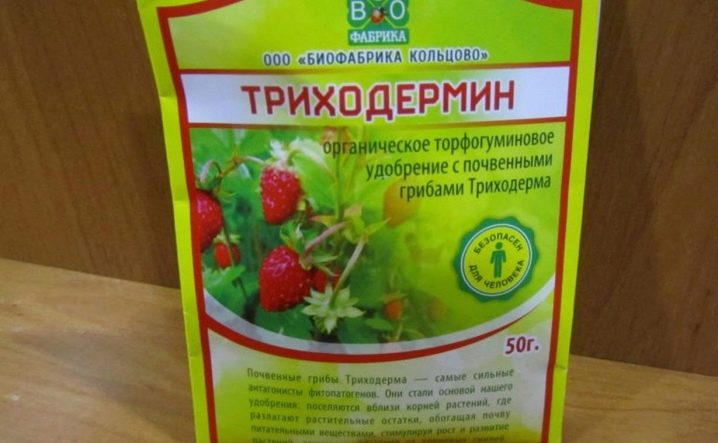
A spider mite is also a great danger. It is unpleasant in that it lays the larvae, so the fight against it is long. Every week for several months, the begonia will have to be treated with a special anti-tick preparation purchased from a garden store.

You will learn more about how to care for begonias by watching the following video.
Reproduction
The family of red begonias can be increased in the house, choosing the best way from several options.
- Division of the bush. To do this, the plant must be dug up, spread out on a flat surface, and the roots must be freed from the ground. Then, with a sharp, clean knife, divide the roots into several parts so that each one has shoots. After that, the resulting parts must be planted in pots.
- Cuttings. Cut off the top of the plant or side shoots. It can be rooted both in the ground and in the water. In the first case, the stalk is placed in a nutrient composition, covered with a transparent cap on top, which is periodically removed to ventilate the seedling. In the second case, the stalk is placed in water, it is periodically changed. After the roots appear, the plant can be planted in the ground.
- Division of the sheet. If you need a large number of new plants, you can use the method of propagation by dividing the leaf.But you must immediately take into account that this method may be longer. You need to find a large beautiful leaf on the plant. Cut it off. Then put on a board and cut with a sharp knife into several pieces. Several germination methods are used. In the first method, pieces of leaves are placed on moistened cotton wool and covered with a transparent bag on top. Periodically, cotton wool is moistened by spraying and ventilated. When the first roots appear, you can transplant it into the ground. The second method involves placing the fragments of the leaf in water so that the upper part is on the surface. And in the third version, they are immediately placed in the ground in the same way: part in the ground, part on the surface, covered with a transparent lid on top and await rooting, periodically moistening the soil by spraying.
- Alternatively, begonia can be grown by purchasing plant seeds from the store. They are placed in the ground shallow, right on the surface, only slightly pressed into the soil, and then spray the soil. When the sprouts appear and give 2 leaves each, you can plant them in more spacious pots.
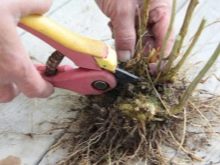
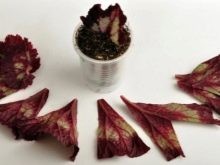
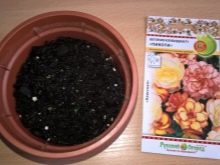































The comment was sent successfully.